
Tivoli Gardens, also known simply as Tivoli, is an amusement park and pleasure garden in Copenhagen, Denmark. The park opened on 15 August 1843 and is the third-oldest operating amusement park in the world, after Dyrehavsbakken in nearby Klampenborg, also in Denmark, and Wurstelprater in Vienna, Austria.

The Ny Carlsberg Glyptotek, commonly known simply as Glyptoteket, is an art museum in Copenhagen, Denmark. The collection represents the private art collection of Carl Jacobsen (1842–1914), the son of the founder of the Carlsberg Breweries.

The earliest traces of Danish music go back to the many twisting Bronze-Age horns or lurs which some experts have identified as musical instruments. They have been discovered in various parts of Scandinavia, mostly Denmark, since the end of the 18th century. Denmark's most famous classical composer is Carl Nielsen, especially remembered for his six symphonies, while the Royal Danish Ballet specializes in the work of Danish choreographer August Bournonville. Danes have distinguished themselves as jazz musicians, and the Copenhagen Jazz Festival has acquired an international reputation. The modern pop and rock scene has produced a few names of note, including MØ, Dizzy Mizz Lizzy, Lukas Graham, D-A-D, Tina Dico, Aqua, The Raveonettes, Michael Learns to Rock, Volbeat, Alphabeat, Safri Duo, Medina, Oh Land, Kashmir, King Diamond, Outlandish, and Mew. Lars Ulrich is the first Danish musician to be inducted into the Rock and Roll Hall of Fame.

Frederik Reesen Magle is a Danish composer, concert organist, and pianist. He writes contemporary classical music as well as fusion of classical music and other genres. His compositions include orchestral works, cantatas, chamber music, and solo works, including several compositions commissioned by the Danish royal family. Magle has gained a reputation as an organ virtuoso, and as a composer and performing artist who does not refrain from venturing into more experimental projects – often with improvisation – bordering jazz, electronica, and other non-classical genres.
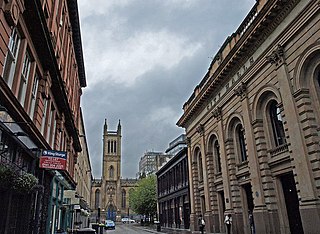
Glasgow's City Halls and Old Fruitmarket is a concert hall and former market located on Candleriggs, in the Merchant City, Glasgow, Scotland.

Copenhagen Jazz Festival is a jazz event every July in Copenhagen, the capital of Denmark. Copenhagen Jazz Festival was established in 1979, but beginning in 1964 Tivoli Gardens presented a series of concerts under the name Copenhagen Jazz Festival with Thelonious Monk, Miles Davis and many others.

Royce Hall is a building on the campus of the University of California, Los Angeles (UCLA). Designed by the Los Angeles firm of Allison & Allison and completed in 1929, it is one of the four original buildings on UCLA's Westwood campus and has come to be the defining image of the university. The brick and tile building is in the Lombard Romanesque style, and once functioned as the main classroom facility of the university and symbolized its academic and cultural aspirations. Today, the twin-towered front remains the best known UCLA landmark. The 1800-seat auditorium was designed for speech acoustics and not for music; by 1982 it emerged from successive remodelings as a regionally important concert hall and main performing arts facility of the university.
Herman David Koppel, known in Denmark as Herman D. Koppel, was a composer and pianist of Jewish origin. Born in Copenhagen, he fled the Nazis with his family to Sweden in 1943. He wrote 7 symphonies, numerous concertos, 6 string quartets and other chamber music, piano works, operas and film music.

The Pantomime Theatre is an open-air theatre located in the Tivoli Gardens in Copenhagen, Denmark. As indicated by the name, it is primarily used for pantomime theatre in the classical Italian commedia dell'arte tradition which is performed daily. Besides this original function, the theatre leads a second life as a venue for ballet and modern dance.
The Copenhagen Philharmonic Orchestra, also known as the Tivoli Symphony Orchestra, is a Danish symphony orchestra which both serves as a regional orchestra for the region of Zealand and as resident orchestra in the Tivoli Concert Hall, for the summer season while the Tivoli Gardens are open.

Frits Schlegel was a Functionalist Danish architect active during the transition from traditional craftsmanship to industrialized construction methods in the building industry. He was among the first architects in Denmark to experiment with poured-in-place concrete. His work was part of the architecture event in the art competition at the 1928 Summer Olympics.
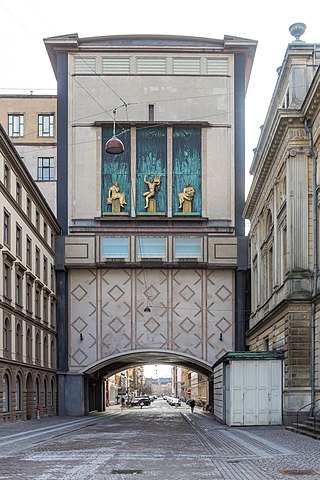
Stærekassen, also known as Ny Scene is a theatre building annexed to the Royal Danish Theatre on Kongens Nytorv in Copenhagen, Denmark. It opened in 1931 to serve a dual purpose as an additional stage for the Royal Theatre and the first home of the new Danish Broadcasting Corporation. The colloquial name, which has now obtained official status, refers to the design of the stage tower in the shape of a box suspended above the street, and in the initial design proposals with a large round window high up as the dominating ornamental feature of the facade.
Paul James Rooney is an English dancer, choreographer & music artist. He has danced with various companies and choreographers around the world, including names such as; Matthew Bourne, Tim Rushton, Will Tuckett, Danish Dance Theatre & has choreographed many productions for Tivoli (Copenhagen)
Assia Zlatkowa Schwarck is a Danish concert pianist of Bulgarian and Greek descent. She was active from 1965–1995.
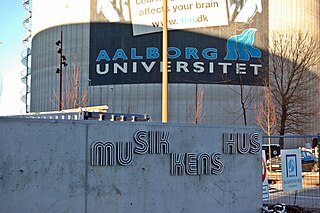
Musikkens Hus is a venue in Aalborg, Denmark. It is located at Musikkens Plads by the Limfjord in the new cultural center area of the city. Opened in March 2014, the building contains a concert hall and practice rooms for the Aalborg Symphony Orchestra and The Royal Academy of Music. Additional tenants include Orchestra Norden, as well as two of Aalborg University's fine arts divisions, Institute of Music and Danish JazzCenter.

The Casino Theatre was a theatre located at Amaliegade 10 in Copenhagen, Denmark. It was built as an entertainment venue by Tivoli Gardens-founder Georg Carstensen but was converted into a theatre in 1848. It closed in 1937 and the building was demolished in 1960.
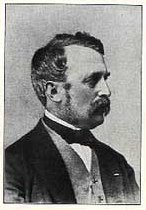
Harald Conrad Stilling was a Danish architect who was active in Copenhagen during the Late Classical period of the mid-18th century. He received the C. F. Hansen Medal in 1841.
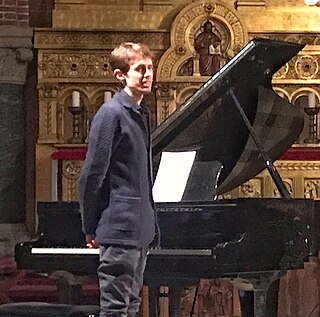
Sebastian Zawadzki is a Polish-born jazz pianist, composer and film composer living in Copenhagen who has been releasing albums since 2014 as well as composing and arranging music for a wide array of media including TV and films. In his works he incorporates elements of classical, electronic and jazz music.

The Glass Hall is a 957-seat theatre venue located inside the Tivoli Gardens in Copenhagen, Denmark.

Tietgensgade is a street in central Copenhagen, Denmark. It runs from H. C. Andersens Boulevard in the northeast to Kvægtorvgade at the Meat-Packing District in the southwest, linking Stormgade in the city centre with Ingerslevsgade and Halmtorvet/Sønder Boulevard in Vesterbro. The street follows the rear side of Tivoli Gardens and Copenhagen Central Station. The viaduct that carries it across the railway tracks at the central station is known as Tietgensbro. A series of staircases and lifts provides direct access from the viaduct to the station platforms.



















